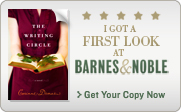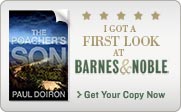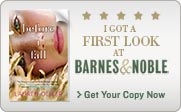Sunday, July 31, 2011
The Photographer's Eye: Composition and Design for Better Digital Photos by Michael Freeman
This book goes through what makes a pleasing composition. I found the pictures beautiful and the text helpful to show how the pictures were composed. This book would be very helpful for those looking to improve their composition skills. If you need more detail about the settings to use on your camera to achieve these results, you'll need to supplement this book with another.
Trespasser by Paul Doiron
In this mystery Maine Game Warden Mike Bowditch finds himself drawn into a case out of his purview when a woman goes missing from the scene of a car hitting a deer. The case was excellently plotted, and I enjoy the main character, who's a detective out of a noir past--despite his ability to find solutions to others' mysteries, his own life spirals dangerously out of control. However, the surrounding characters/subplots weren't quite as well developed as the main plot. All in all, I enjoyed this mystery.
Perdido Street Station by China Miéville
I enjoyed reading this book. It's set in a dystopic, alternate universe full of a variety of teachers. It focuses on Isaac Dan der Grimnebulin (a scientist who works on the edges of society and is trying to restore flight to a garuda who has been stripped of his wings) and his lover Lin (an artist who has just taken on a commission from a scary crime lord). I was interested in the freedom of modification of the body possible in this world. I also liked the way the plot worked--it was a mystery figuring out how the crime lord plot fit in with the scientist plot and how it all fit in with the terrors that have started turning up in the city. As a reader, I enjoyed assessing each new character's motivations. Not your mother's science fiction, but very smart and very fun.
Sunday, July 24, 2011
Seeing Further: The Story of Science, Discovery, and the Genius of the Royal Society edited by Bill Bryson
This volume collects a number of essays by a wide range of authors on the history of the Royal Society and various scientific discoveries from its founding to the present day. I enjoyed this collection, although I found some of the essays much more compelling than others. Particularly noteworthy essays include the one by Margaret Atwood on Jonathan Swift and Gulliver's Travels, the one by Georgina Ferry on x-ray crystallography, and the one by Richard Fortey on collections. I'd recommend dipping into and out of this volume rather than reading straight through.
Labels:
anthology,
collecting,
essays,
history,
literature,
science
National Geographic: The Ultimate Field Guide to Photography by Bob Martin, Richard Olsenius, Robert Clark, John Healey, and Debbie Grossman
I found this guide to be a little dated in places (especially on technical specifications of digital cameras and backing up your images) and a little basic in others (the projects chapter offered some creative opportunities and lots of things that can be as easily and cheaply done through commercial services now and the first chapter felt too basic). Still, it offered good tips and ideas for taking and improving pictures--especially what to think about as far as ISO, aperture, and shutter speed settings are concerned. There was a short section on photoshop which was actually less dated than a lot of the other digital information. The pictures used to illustrate the book are beautiful, but some are hard to see because of the binding.
Saturday, July 16, 2011
The Pale King by David Foster Wallace
This book, which is mainly set at the Peoria, Illinois, IRS office, reflects on attention, boredom, and how we deal with information. There's a lot on IRS tax codes and procedures, interspersed with personal sections about characters who have obsessive personalities (the character who worries himself into a sweat about sweating in public, the nice guy who puts others first and whom everyone consequentially hates). The book was completed (insofar as it has a finished form) after Wallace's death by his editor--the editor arranged the existing sections in the best possible order in his opinion--but it is not complete in any other sense of the word. Wallace's prose is crisp and evocative, and the book makes an enjoyable read.
Thursday, July 14, 2011
St. Lucy's Home for Girls Raised by Wolves by Karen Russell
This collection was intriguing but ultimately disappointing. Ms. Russell has a strong imagination, and I enjoyed piecing out what was going on with the characters in the magical realism of the stories. But when it came down to it, I found that the stories trailed off, or lacked a satisfying conclusion. I appreciate that ambiguity is a valid artistic choice, but I don't think the ambiguity was serving these stories particularly well.
Labels:
animals,
family,
magical realism,
short stories
The Shadow Rising by Robert Jordan
In this book we see Rand and Perrin begin to assert themselves. While the main cast of characters was assembled in Tear, they quickly begin to disperse again. I was particularly moved by the strength in the way Siuan Sanche, the Amyrilin Seat, faces an unexpected setback. I also liked watching the back and forth between Perrin and Faile. I feel like we're beginning to get to know some of the Forsaken as more than just bogey men. I also find myself more and more intrigued by the increasing variety and experiences of women who can channel. All in all an intriguing entry.
Monday, July 11, 2011
In the Garden of Beasts: Love, Terror, and an American Family in Hitler's Berlin by Erik Larson
This book portrays Berlin (and Germany) during Hitler's rise to power in the early 1930s through the lives of the American ambassador to Germany (William Dodd) and his daughter, Martha. I found this book fascinating--especially for the portrait it paints of Germany between the wars. At times, the storyline following the family struck me as a bit desultory, but overall, it gave a nuanced portrait. The book makes me think that what happened in Germany during that time was not inevitable, and that the various players were not as easily categorized as I might have suspected.
Labels:
biography,
Communism,
Germany,
history,
politics,
United States,
World War I,
World War II
Sunday, July 10, 2011
Silencing the Past: Power and the Production of History by Michel-Rolph Trouillot
This book is interested in the way we produce and understand history--a word that ambiguously stands both for what happened and how we talk about it. Trouillot contends that while history is not just constructed, it is also more complicated than a set of facts that can be revealed. He uses three case studies (the execution of Sans Souci, the disappearance of the Haitian Revolution in the historical record, and Columbus's voyage to the Americas) to make his points. His history is both interesting and provocative, and his larger argument is very compelling. Altogether his book is a very worthwhile read.
Labels:
academia,
American Studies,
Caribbean,
colonialism,
Haiti,
history,
New World,
post/colonial,
race,
slavery,
theory
Haiti, Hegel, and Universal History by Susan Buck-Morss
This book contends that Hegel's ideas about the relationship between masters and slaves is not rooted in ancient philosophy, but in his own observations of the unfolding Haitian Revolution. Buck-Morss is interested in the connections between freemasonry and the Haitian Revolution as well. I found her arguments fairly convincing, especially in lining up Hegel's reading and newspaper coverage of the Haitian Revolution.
Labels:
academia,
Caribbean,
colonialism,
Haiti,
hemisphere,
history,
philosophy,
post/colonial,
revolution,
slavery,
voodoo,
war
Arthur Mervyn by Charles Brockden Brown
This book recreates the complicated story of Arthur Mervyn, a young man from the country who comes to Philadelphia and immediately finds himself embroiled in its corruption--first commercial and then physical. I am particularly interested in the ways that Haiti simmers below the surface of this novel. While the plot is hard to follow at first, by untwisting it the reader discovers the full extent to which the slave trade supports enterprise in early America.
Friday, July 8, 2011
Storm Front by Jim Butcher
I enjoyed this book which introduces readers to Harry Dresden, the only wizard in the phone book in Chicago. He gets two cases, apparently unrelated at the same time, but as the pressure increases, it becomes increasingly clear that they're connected somehow. I enjoyed the murder mystery, which was well-plotted, and I found the magic world just settled in enough to accept. I'll be continuing with this series.
Death's Excellent Vacation edited by Charlaine Harris and Toni Kelner
I found this collection of stories to be uneven at best. While I really enjoyed "Two Blondes," the Sookie Stackhouse story that starts the collection, and several in the rest of the collection, other stories struck me as dull or clichéd. I'd recommend skipping around if you pick this collection up.
Labels:
anthology,
horror,
short stories,
vampires
In a Sunburned Country by Bill Bryson
This book did what travel books ought to do: it made me really want to visit Australia. While Bryson plays up the dangers of travel in Australia--venomous creatures and bad roads abound in this book, he treats the country as a fascinating place containing contradictions that make it even more exciting. Bryson's trademark humor (and sometimes less-enthused travel companions) are here in plenty as well. This book gives a good sense of the country and of Bryson's personality. Highly recommended--if you're not worried about the sudden compulsion to jet off to Australia once you're done reading.
Subscribe to:
Posts (Atom)





